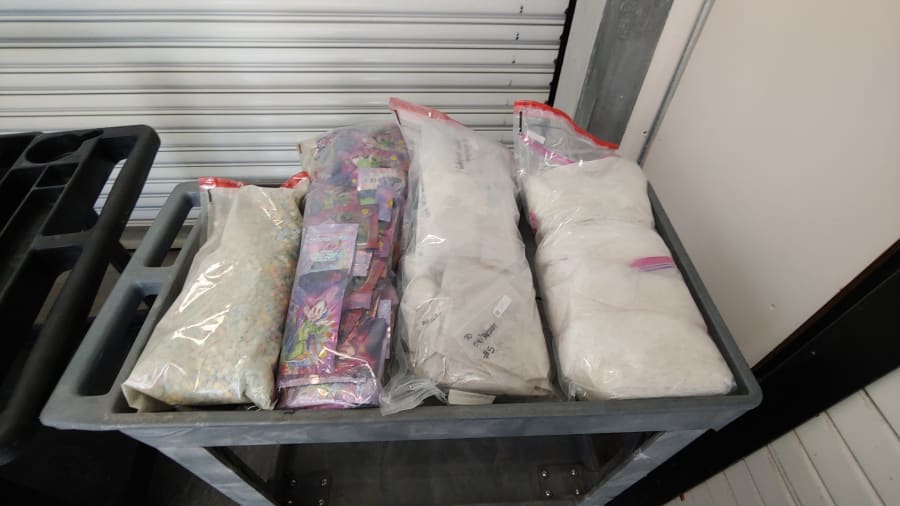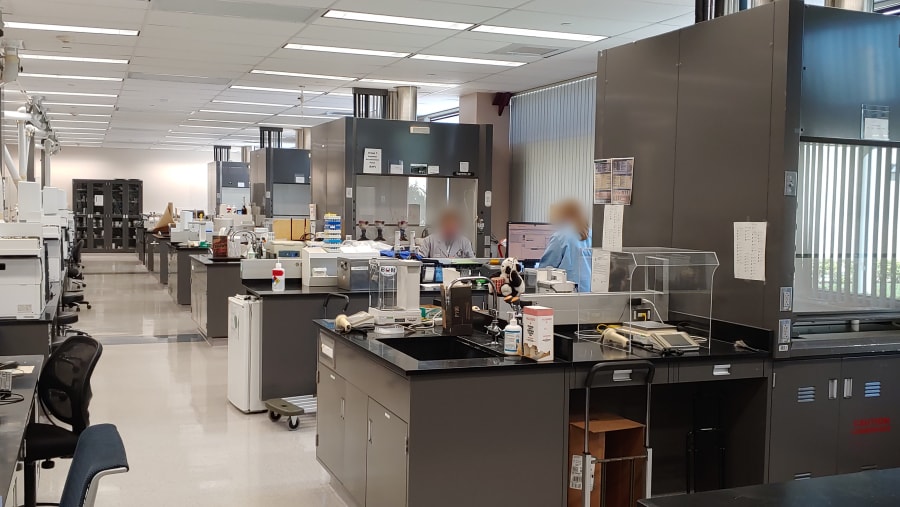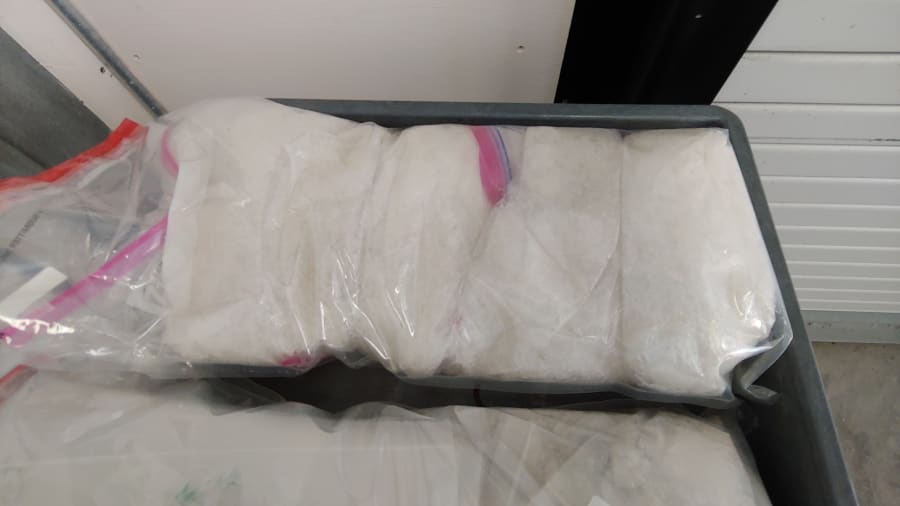When people think of the Drug Enforcement Administration, they may envision undercover federal agents infiltrating major drug operations. They may also conjure up mental images of heavily armed federal law enforcement officers raiding a drug house in the United States or arresting a drug warlord abroad. But most people may not realize that behind the scenes, there is a scientific component of the DEA that is also on the frontlines when it comes to the war on drugs.
News4Jax was recently granted exclusive access to a DEA lab where millions of dollars’ worth of seized illegal narcotics are analyzed by scientists. For security reasons, the location of the lab cannot be disclosed.
What scientists working in the lab find not only helps federal prosecutors with their criminal cases against suspected drug dealers and traffickers, scientific findings also help agents identify new types of illegal narcotics, as well as new methods used to smuggle those narcotics into the country.
Agnes Winokur, a DEA lab director, said the DEA is seeing many different techniques used by drug cartels to conceal illegal narcotics being smuggled into the U.S. One of the newest techniques is hiding crystal meth in gallons of paint.
“What we have to do then is extract the methamphetamine from all the different types of chemicals they mix in,” Winokur said.
News4Jax asked her how difficult that is.
“It depends,” Winokur replied before showing News4Jax an example from a recent criminal case. “This was in paint, so it can be a little bit more challenging than methamphetamine in powder.”
When crystal meth is concealed in paint, the combination of chemicals can cause the paint container to corrode and collapse over time.
“So we had to analyze it quickly then transfer it to another container in order to maintain the integrity of the sample and evidence,” Winokur said.
Chemists at the lab are also seeing narcotics, such as meth, being smuggled in concrete and even aluminum.
“Somehow, drug cartel scientists play with the chemical properties of the actual drug and then whatever they try to conceal it in so that it’s able to mix together,” Winokur said. “So, if you saw a piece of aluminum, you would not know what drugs were in there.”
DEA scientists have noticed a trend during the past several years involving the makeup of narcotics. In the past, they would get a narcotic sample consisting of just one or two drugs. But, now, scientists are receiving lots of samples of what they call polydrugs.
“When we analyze it, it’s not surprising to find six or seven different drugs,” Winokur said. “Nowadays, we may analyze a cocaine sample and find fentanyl and heroin and different types of fentanyl all together in one sample which increases how dangerous some of these drugs are when they are out in the street.”
Her explanation of what they are finding means people who are addicted to drugs may be unaware that they’re not just taking one drug, but a mixture that is potentially deadly.
News4Jax was shown an example of another fairly new discovery that scientists have uncovered. A bag of colorful tablets disguised as ecstasy turned out to be tablets of meth, and pieces of what looked like a broken cherry Jolly Rancher was analyzed and determined to be fentanyl.
“They really did look like candy,” Winokur said. “Obviously, they are trying to bring in the younger population.”

While scientists are examining an overwhelming amount of meth and heroin, they are also seeing extremely huge amounts of cocaine, especially cocaine bricks that have either washed up on Florida’s shores or seized during a drug bust.
“There’s an increase in the weight and frequency we are getting these submissions,” Winokur said.
Eutylone, which can also be disguised to look like colorful tablets, is a fairly new designer stimulant that, according to the DEA, is popping up on the streets in Florida and making its way into the lab for analysis.
“It’s definitely unique to Florida, but it is beginning to spread. It’s been seen since 2019,” Winokur said.
But there is another scary trend scientists at the lab are seeing. It’s the prevalence of substances so unknown that they can’t be field-tested.
“We just don’t know what they are because these synthetic samples are constantly being tweaked by cartel scientists,” Winokur said. “As soon as we identify them, share info with the community or law enforcement take them off the streets, they come up with a new one.”
Depending on the chemical makeup of unknown drug samples, it can take anywhere from several hours to several months to process those narcotics and write up a report on the findings.
PHOTOS: A look inside a DEA lab

Narcotics pose health risk for scientists in lab
Maria Lopez is a DEA senior forensic chemist who is mainly hand on when it comes to analyzing samples of evidence.
“Most the cases I receive are cocaine, but I have a rush case with tablets, heroin, ketamine and other drugs,” Lopez said before acknowledging the dangers of her job.
Cocaine, heroin and fentanyl can all look the same, and that poses a health risk for Lopez and other scientists in the lab.
Lopez showed News4Jax a small bag of a white powdery substance that came into the lab believed to be cocaine but wasn’t analyzed yet which means the substance could potently be fentanyl.
“I see cases that have a whole brick like a kilo of cocaine and it’s just pure fentanyl,” Lopez said
Because of the deadly threat of fentanyl, working in the lab can be very dangerous. Scientists wear protective gloves, eyewear and a mask when handling evidence. Samples of the evidence are prepared in an enclosed glass area where there is no air circulation to blow dangerous particles. Should someone in the lab accidentally get exposed to fentanyl, there’s a supply of naloxone injections available to rapidly reverse the side effects of a fentanyl overdose.

Lopez showed News4Jax a computerized machine used to determine the purity of a specific narcotics and how many drugs have been mixed with it. Every time the sensor detects a specific drug, the digital meter on the screen will spike.
“Mostly the cases are between 70s and 80s. I would say, for meth, we have 99 to 100% purity,” Lopez said.
According to the DEA, meth that pure only comes from Mexican drug cartel super labs. Another way of determining the origin of certain narcotics is how the narcotics are labeled.
Lopez unwrapped a brick of cocaine that was impressed with the word DIESEL. DIESEL is a brand of cocaine produced by a specific cartel. That brick of cocaine was part of a DEA seizure that include more than 600 kilos of cocaine with a street value of more than $20 million.
At some point, seized narcotics are incinerated after they have been fully analyzed.
Scientists working in the lab are not the people who put on body armor and go into homes of suspected drug dealers to make an arrest and seize the flow of narcotics onto the streets, but they do play an important role in gathering scientific information about those narcotics.
“That information is so critical to figure out what is affecting our communities, what’s causing our neighbors and relatives to be afflicted by these very dangerous drugs,” Winokur said. “So it takes heart. You must care.”
The Substance Abuse and Mental Health Services Administration’s National Helpline -- 1-800-662-HELP (4357) -- is a confidential, free, 24-hour-a-day, 365-day-a-year, information service for individuals and family members facing mental and/or substance use disorders. The service provides referrals to local treatment facilities, support groups and community-based organizations.




